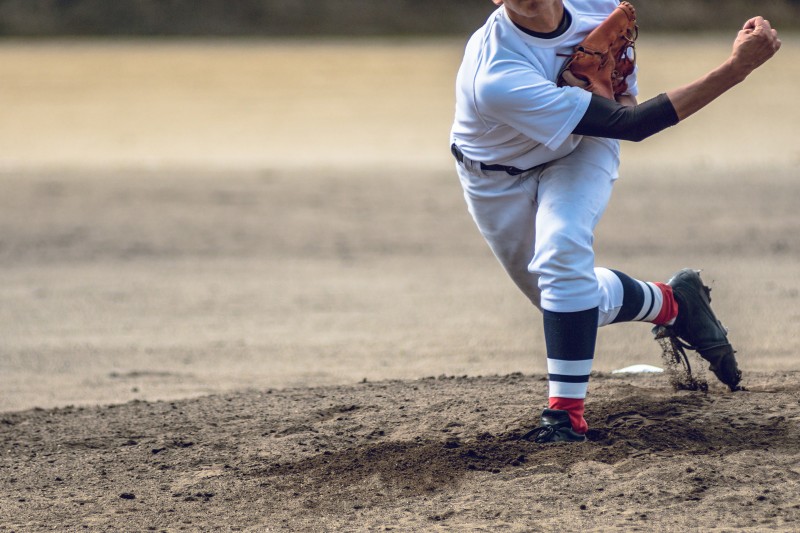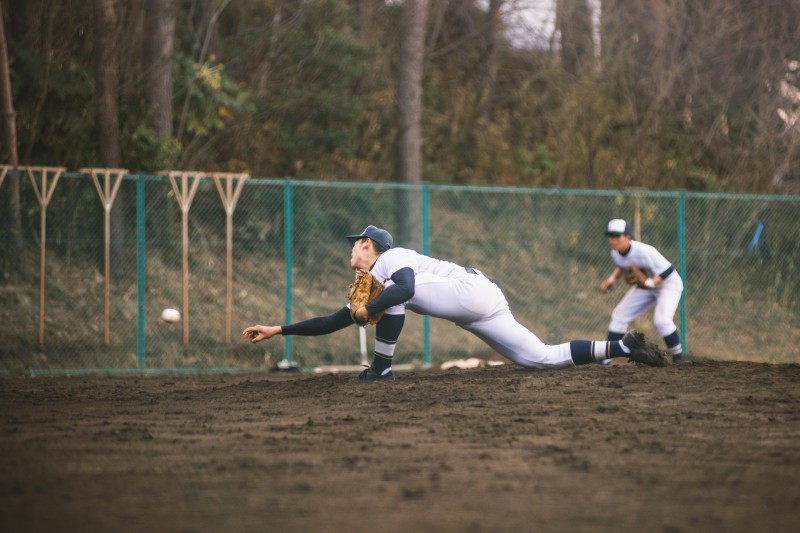
I’d like to apologize before we get started if the flashy title reeled you in. I’ve been training baseball for all of six months (maybe more, depending on when elitefts publishes this article), so if you were hoping for Zach Dechant-level insight on training baseball, that you will not be receiving. But if you’re a loyal reader, then sit back and get ready for some lofty declarations, bad analogies, and head-scratching remarks. Goodbye, arm care for pitchers, and hello, dynamic effort training for baseball. I’m joking… I’m not going to give you my secrets to dynamic effort training. You must be insane. But read on anyway, and just maybe I’ll throw it at the end as a thank you for putting up with this article.
RECENT: Listen and Learn: How I'm Developing My Staff
The first thing I learned about baseball is this: You don’t have to treat them “special.” Baseball is obviously its own sport, but most people try to convince you that you need to train baseball players like they’re aliens that just landed on Earth. Again, I haven’t been training baseball my whole career, so I don’t want to come off as “having it figured out,” but I also am not trying to sell a product to anyone.
Do I break up hitters and pitchers? Of course. Do I train baseball like every other team? Of course not. But I don’t sit there worrying about making a mutually exclusive specialized program for every single one of my baseball guys. If you’re a hitter, you’re on this program; if you’re a pitcher, you’re on this program.

mtaira © 123rf.com
Now that’s not to say the programs aren’t specialized to each player in terms of percentages. And then if we go even further, I will make certain modifications to certain guys based off of previous injury history. On top of that, during the season, I’ll break up mid-week and weekend guys programs.
Besides that, it’s pretty simple. I need them to learn to absorb force and reproduce it at an extremely high level of efficiency and effectiveness thus ensuring high power outputs and high percent chance of staying healthy. “It ain’t that deep, chief,” as the kids would say.
I get arm care and all that stuff for pitchers, but thankfully my coach and AT have been here together a combined quarter of a century and have a well-running system in place. My job is to not mess that up and get the guys physically and mentally prepared to go out and dominate.
Baseball is a power skill sport. It is very skill-based, but at the end of the day, when the bat contacts the ball, you need the power to drive it over the fence. And that leaves the question: What do you do here? I try my best not to screw it up.
Get ready to have your mind blown: We lift heavy, keep our volume down on our max effort work, don’t condition the strength out of them, and do a lot of speed work. We do plyometrics, deceleration and acceleration work, and a whole gambit of other fun tricks (including accommodating resistance on all our priority work). We box squat, box jump, trap bar jump, floor press, offset press, a hodgepodge of different types of carries (all done with sandbags), and just genuinely worry about getting bigger, faster, annnnnnnnd stronger.
Do I train them like football players? No, no, no, that would be moronic because they play baseball, not football. But I do train intent, aggression, focus, and finish. I tell my guys all the time, “Who says baseball players can’t be strong?”
I’ve already found out there are a lot of gurus and wizards in the baseball realm. Guys trying to peddle magic and guys trying to make sure their ivory towers are protected. I don’t know what I don’t know about baseball yet, but I do know there is a lot I don’t know, and I will continue to learn what I don’t know.
RELATED: Why You Should Never Box Squat Your Athletes
The first thing I did before starting to program for my baseball team was call up Kurt Hester and Nate Harvey. I wanted to learn everything I could from these two men about training baseball, conjugate, and just general advice from their wealth of knowledge. I knew that there was a lot I had to learn, and thankfully, I had two great resources from which I could gather good information. I know that I am in no way, shape, or form a collector of ivory nor am I interested in buying a crystal ball from some baseball strength coach wizard named Merlin.

mtaira © 123rf.com
At the end of the day, did your kids get better or not? Are you making an impact on your athletes or not? That’s why I asked these two men for their opinions on training as I trust them for their knowledge and character. I know Kurt isn’t going to try to swindle me with BS training. And I for sure know Nate isn’t going to try to coin me on some fluff piece about training. There are those I would never bother to call because I know it’d be an hour of hearing about their latest gimmick. Listen, guy, don’t sit there and ask if I want an autographed copy of your 20-page pamphlet. It ain’t that deep.
I’m finding the two of the most important things I can coach are discipline and intent. Discipline is a 100 percent given since Day 1 of strength coach boot camp. But as for intent, I’m finding out more and more, is like a true magic bean. Once your athletes learn intent motor unit, recruitment goes up and so does the weight. It’s a nifty trick that I’m embarrassed to say took me seven years to figure out.
Sometimes it’s hard for us Muggles to learn as fast as an old-fashioned wizard. Part of why we train the way we do is due to the buy-in from the athletes. I have most of my guys that came to me and said, “Coach, you sound just like Louie Simmons.” I was in shock and amazement when they told me that because that means they bought into the type of training they’re doing and took time out of their day to watch a movie about the roots of their training. That, to me, was a major win. Buy-in is a huge factor in determining how successful a program is going to be. Without buy-in, you’re screwed. I don’t care how nice your magic wand looks.
The next thing is lifting heavy (I saw this subjectively) every day, which is not easy. But my guys are starting to thrive on it. They are yearning for it. And I can already see the mentality building. The chains clanging, the weights moving, and the atmosphere in the weight room is utter madness. That, to me, is what it’s all about. Building an atmosphere in the weight room that complements what we have on the field.
I am beyond pumped to continue to grow in my knowledge of training baseball and for this program to keep growing. As I type right now, I’m getting excited thinking about the groups I have tomorrow and how awesome they’re going to be. I cannot wait. The athletes don’t know that as much fun as they’re having, I, selfishly, am having three times the amount of fun being around them.
Oh, and before I forget, I said I’d talk about dynamic effort training for baseball for those who stick around to the end. Lift light things fast for 12 to 14 sets of two (lower body) or three (upper body). Autoregulate based off of speed, which is easiest to do with a tendo unit. With a relatively new group as far as training dynamic effort, I will keep my tendo speed 0.8 to 1.0 until they get it. Then we’ll drop and get a little heavier.
If all the stuff I said doesn’t work for your team… oh, well… I never said I was a guru or a magician, so figure it out yourself.
Header image courtesy of Michal Sanca © 123rf.com










